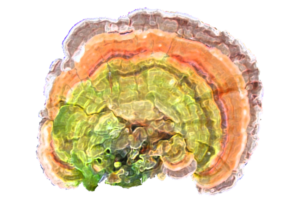Chu TT, Benzie IF, Lam CW, Fok BS, Lee KK, Tomlinson B
Abstract
Previous studies have suggested that Lingzhi (Ganoderma lucidum) has antioxidant effects and possibly beneficial effects on blood pressure, plasma lipids and glucose, but these have not been confirmed in subjects with mild hypertension or hyperlipidaemia. The objective of the present study was to assess the cardiovascular, metabolic, antioxidant and immunomodulatory responses to therapy with Lingzhi in patients with borderline elevations of blood pressure and/or cholesterol in a controlled cross-over trial. A total of twenty-six patients received 1·44 g Lingzhi daily or matching placebo for 12 weeks in a randomised, double-blind, cross-over study with placebo-controlled run-in and cross-over periods. Body weight, blood pressure, metabolic parameters, urine catecholamines and cortisol, antioxidant status and lymphocyte subsets were measured after each period. Lingzhi was well tolerated and data from twenty-three evaluable subjects showed no changes in BMI or blood pressure when treated with Lingzhi or placebo. Plasma insulin and homeostasis model assessment-insulin resistance were lower after treatment with Lingzhi than after placebo. TAG decreased and HDL-cholesterol increased with Lingzhi but not with placebo in the first treatment period, but significant carry-over effects prevented complete analysis of these parameters. Urine catecholamines and cortisol, plasma antioxidant status and blood lymphocyte subsets showed no significant differences across treatments. Results indicate that Lingzhi might have mild antidiabetic effects and potentially improve the dyslipidaemia of diabetes, as shown previously in some animal studies. Further studies are desirable in patients with hyperglycaemia.
Reference:
Br J Nutr. 2012 Apr;107(7):1017-27. doi: 10.1017/S0007114511003795. Epub 2011 Aug 1

